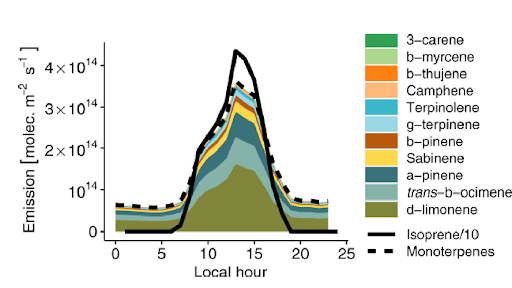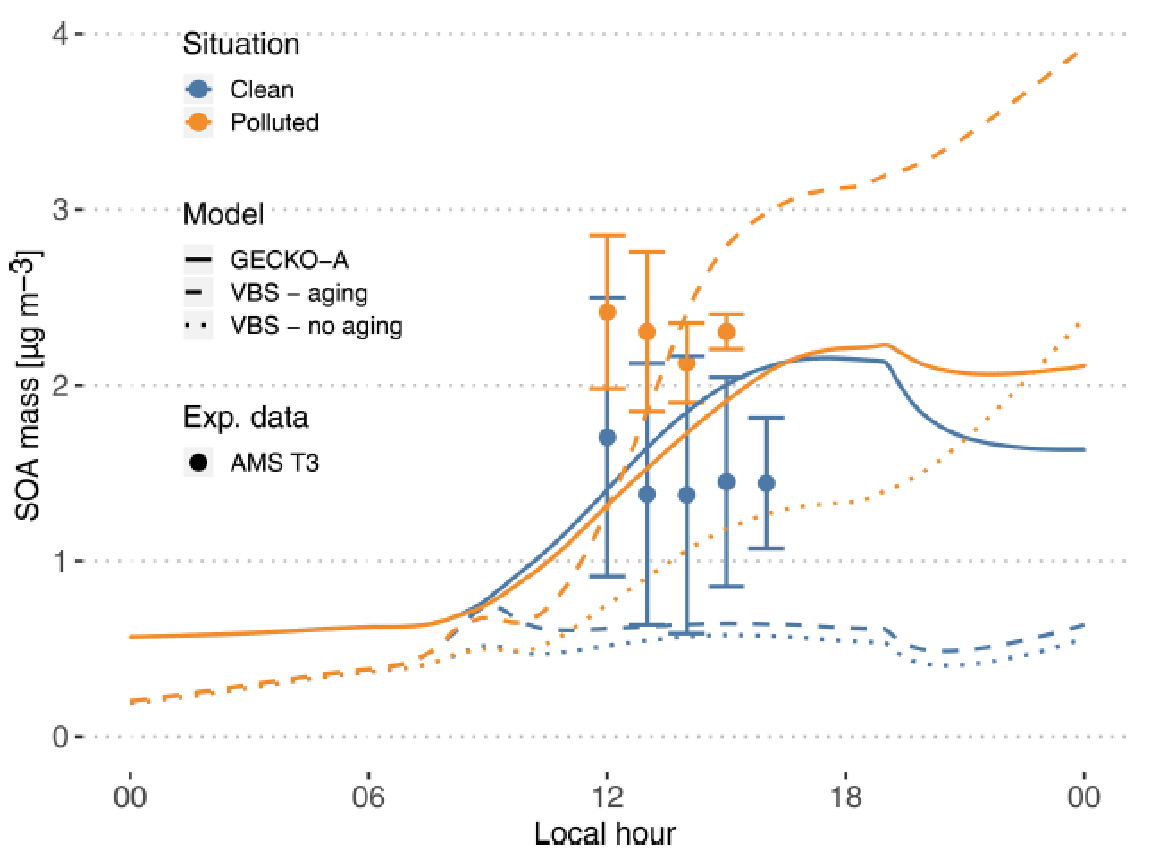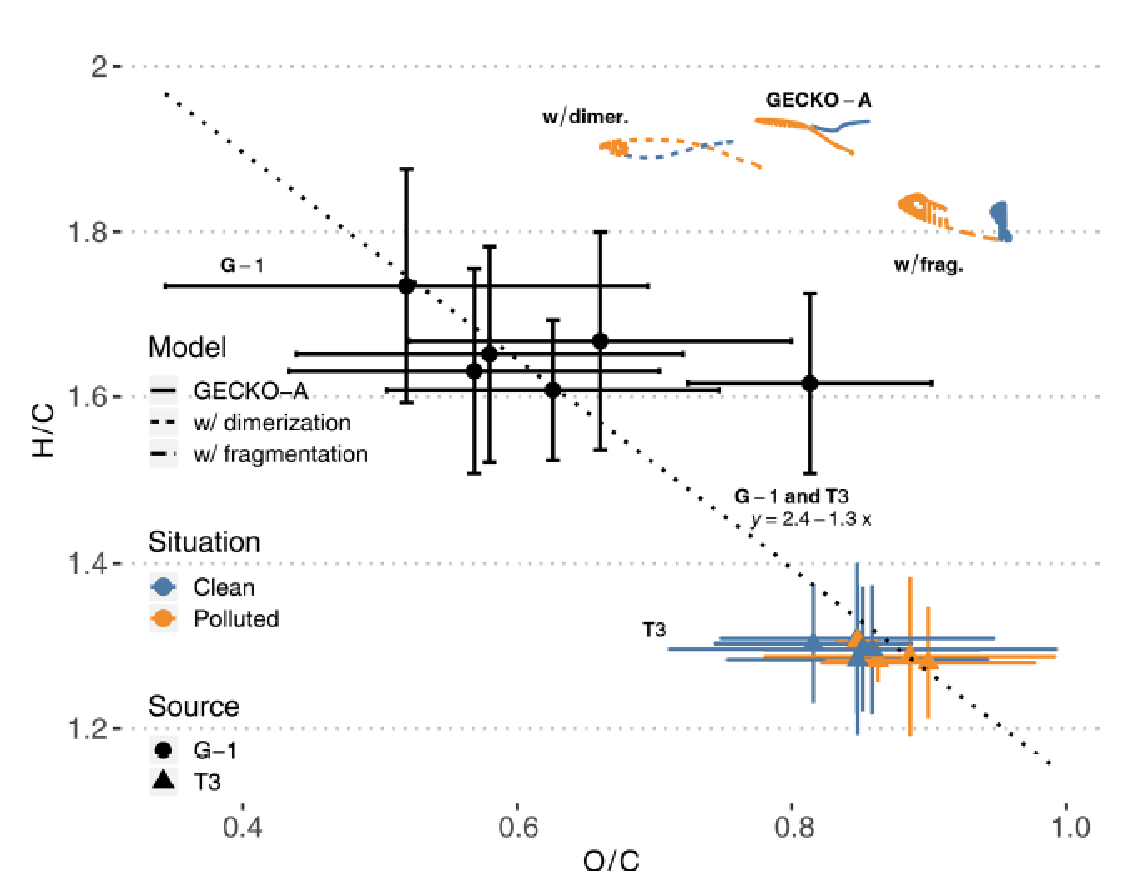Chemistry of Secondary Organic Aerosols
The chemistry of secondary organic aerosols (SOA) is not yet fully elucidated, particularly for biogenic VOCs whose emissions dominate globally. We used the GECKO-A model to compare with observations from the 2014/15 GoAmazon field campaign held near Manaus, Brazil. The model was initialized with complex mixtures of terpenes and other biogenic gases (see Figure 1) and in some cases with urban emissions. The amount of SOA produced by the explicit GECKO-A model was comparable to observations (see Figure 2) and to a range of parameterized (i.e. not explicit) models. GECKO-A also predicts the O/C atomic ratio within SOA in good agreement with observations (Figure 3), but appears to over-predict the H/C ratio. More chemical detail, including the interesting role of N and S, may be found in: Mouchel-Vallon, C., J. Lee-Taylor, A. Hodzic, P. Artaxo, B. Aumont, M. Camredon, D. Gurarie, J.-L. Jimenez, D. H. Lenschow, S. T. Martin, J. Nascimento, J. J. Orlando, B. B. Palm, J. E. Schilling, M. Shrivastava, and S. Madronich, Exploration of oxidative chemistry and secondary organic aerosol formation in the Amazon during the wet season: explicit modeling of the Manaus urban plume with GECKO-A, Atmos. Chem. Phys., 20, 5995-6014, 2020. doi:10.5194/acp-20-5995-2020.


